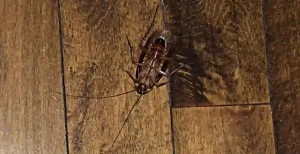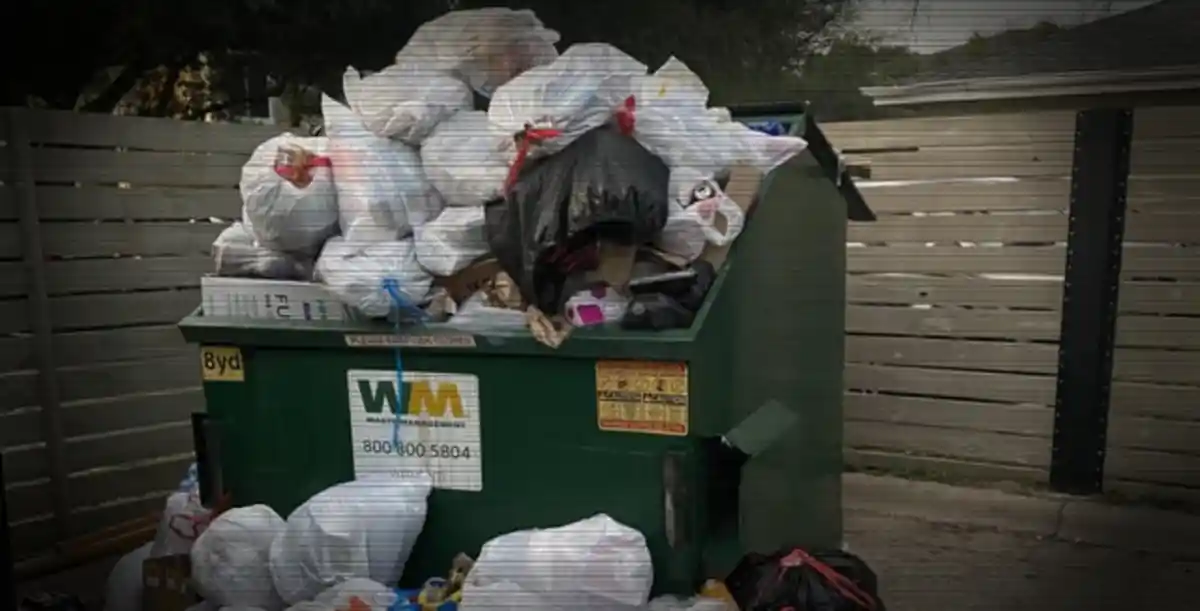The thought of a cockroach crawling on you while you sleep is both disgusting and frightening. These pests not only cause fear and disgust but also cause health problems such as allergic reactions or asthma triggers when you unknowingly inhale their skin and waste products. So, to avoid an unsettling scenario like “cockroach in room, can’t find it”, follow this guide to fish out the pest from its hiding in your room.
Cockroach in room can’t find it (do this!)

Don’t immediately and haphazardly spray pesticides all over your bedroom if you have a cockroach but can’t find it. You need to devise a strategy first to increase your chances of finding the disappeared roach.
Begin by focusing on the 3 things that a roach requires: warm shelter, food, and water. By eliminating these elements, you’ll essentially be giving them an eviction notice.
Besides, a single pesticide treatment won’t permanently solve the problem if the roach has a nest in your room—hopefully, it doesn’t.
The first step is to look for a possible roach nesting spot in your room. If you’ve only spotted it in one specific area, like under your bed, it is likely hiding there beneath the frame. Look out for droppings, egg sacs, and discarded exoskeletons in the surrounding area to help you determine its hideout.
Now, place a roach trap coated with sticky glue next to the nest (if you found one) or around the spot you first saw the cockroach. For the sticky trap to lure the cockroach out faster, add sugary or starchy foods, decaying organic matter, or food. Also, turn off the light and exit the room for some time.
As you wait for the trap results, try cleaning up your surroundings. Note that if you maintain a tidy bedroom, there may still be areas that serve as a food source for roaches that eventually wobble into your room. Consider removing the following items from your room:
- stacked newspapers
- cardboard boxes
- paper bags
- cluttered piles
- ceiling
- furniture
- pipes
- home electronics
- bedroom cupboards, cabinets, and closets
- baseboards and trim
- decorative items
The cockroach could be hiding in any of the above anyways.
Roaches have a strong attraction to paper products because they easily absorb their pheromone, which acts as a chemical attractor that roaches emit. This pheromone is known as the aggregation pheromone and works like a GPS by communicating its location to others who may eventually enter your room if you don’t act quickly.
After some time, you should find the cockroach in your room that went hiding stuck in the trap.
Finally, you need to clean your room to eliminate any potential hiding spots for roaches.
Make sure to store your food in airtight containers and secure open bags and boxes. Do not leave crumbs in your bed; it is enough to attract a cockroach while you’re sleeping.
Consider sweeping or vacuuming behind large appliances and remove any food waste you have in your room.
Overall, just maintain a high level of cleanliness to prevent a re-infestation. This means:
- not sleeping with dirty dishes in your room;
- sweeping regularly after cooking;
- never leaving food on your desk; and
- taking your trash out regularly to prevent any buildup of potential food sources for roaches.
Roaches may be more attracted to water sources than food though. Therefore, search for areas in your room where you may have exposed water sources and get rid of them. Keep these areas dry, particularly at night when roaches are most active.
Why is there cockroach in my room?
A cockroach in room didn’t just get in—something attracted it. Below are the reasons you have a cockroach in your room:
1. Food and water access
Access to food is the primary reason cockroaches enter your room. They are opportunistic feeders and will consume almost anything left out in your cabinet. The solution is usually to store food in containers that are sealed and inaccessible to roaches.
However, even with food secured, cockroaches can still find a way into your room because they feed on more than just food. They can also eat paper, books, cardboard, and even some types of wood.
2. Your room is damp and dark
After taking measures such as storing food in the refrigerator or sealed containers and cleaning your room, you may think that your room is now protected from a cockroach.
However, this is not always the case. Cockroaches can survive for several days or even weeks without food and will often hide in dark, damp, and well-protected areas of your room during this time.
This means that even if food is no longer accessible to them, you may still encounter a cockroach in your bedroom cabinet or cupboard.
Contrary to popular belief, roaches are more reliant on water than food. In fact, they can only survive for about a week without access to water, which is why they are often found in homes, particularly in bathrooms.
3. You brought a roach-infested item inside
While bed bugs are known for hitching rides in clothing and furniture, cockroaches do not typically follow this pattern. However, it is possible that you unknowingly brought cockroach into the room that was residing in cardboard boxes, computers, or video game systems. This is especially true if these items are second-hand or were stored in areas like garages or basements. You may not have seen a live cockroach but it left an egg case there. Note that one roach egg case can contain between 16 – 50 eggs, depending on the species.
4. The outdoor environment
People often overlook the possibility of roaches entering from the outside. Warm and humid hiding spots in your yard can create a suitable environment for roach breeding. Thus, you’re likely to have a cockroach in room.
Factors like heavy vegetation, a compost bin, and leaky outdoor faucets can attract roaches to your yard, making it easier for them to invade your home.
Are cockroaches common in rooms?
As long as you have what makes a comfortable breeding for roaches in your room, you will have them.
If you spot a roach in your home, it’s a strong indication that there could be more lurking. Cockroaches are experts at hiding and are mostly active at night, so they tend to remain out of sight during the day.
Therefore, if you encounter just one cockroach in your bedroom, take immediate action to prevent a full-blown infestation.
Signs you may have a roach problem
A cockroach in room you can’t find is already an infestation indicator. Other signs that you may have a larger roach problem in your bedroom are:
a. Sudden cockroach odor
When cockroaches are present in high numbers, they emit a strong, distinct odor that is described as oily and musky. If you can detect this odor, it is a strong indication that your room is infested with roaches.
b. Multiple roach egg sacs
Roach casings are long and brown in appearance. Each casing contains numerous eggs, sometimes as many as 50, so if nymphs survive, then you’ll have roaches spread out into other rooms.
c. Cockroach feces
Roach droppings resemble black pepper or ground coffee. You can use sticky traps in areas where you have found these waste materials to determine if there are any cockroaches present.
Final thoughts
While there DIY methods may help you find a cockroach in room that you can’t find, they may not be effective against a full-blown infestation. So, if you suspect a severe cockroach problem that won’t let you sleep at night, consider calling a professional.
Experts typically employ professional techniques for effective treatment to control the roach population, as well as prevent future outbreaks.
Read also: How to Overcome Fear of Cockroaches






